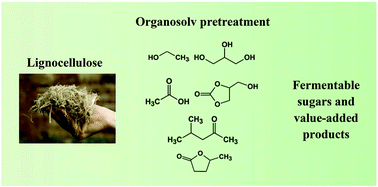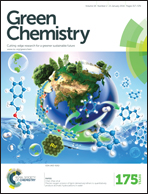Organosolv pretreatment of plant biomass for enhanced enzymatic saccharification
Abstract
The combination of dwindling petroleum reserves and population growth make the development of renewable energy and chemical resources more pressing than ever before. Plant biomass is the most abundant renewable source of energy and chemicals. Enzymes can selectively convert the polysaccharides in plant biomass into simple sugars which can then be upgraded to liquid fuels and platform chemicals using biological and/or chemical processes. Pretreatment is essential for efficient enzymatic saccharification of plant biomass and this article provides an overview of how organic solvent (organosolv) pretreatments affect the structure and chemistry of plant biomass, and how these changes enhance enzymatic saccharification. A comparison between organosolv pretreatments utilizing broadly different classes of solvents (i.e., low boiling point, high boiling point, and biphasic) is presented, with a focus on solvent recovery and formation of by-products. The reaction mechanisms that give rise to these by-products are investigated and strategies to minimize by-product formation are suggested. Finally, process simulations of organosolv pretreatments are compared and contrasted, and discussed in the context of an industrial-scale plant biomass to fermentable sugar process.


 Please wait while we load your content...
Please wait while we load your content...